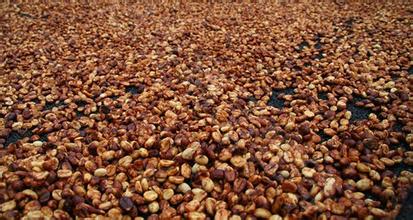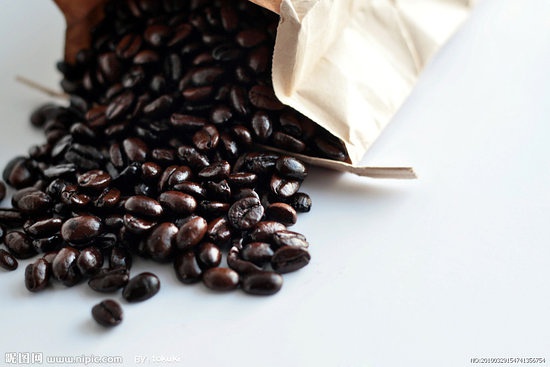On the treatment of Coffee beans introduction of Honey treatment of Coffee fruits and its difference from others

A few years ago, a fad of expensive Indonesian Kopi Luwak introduced domestic consumers to the concept of diversified production technologies for boutique coffee, and then the emergence of sparrow shit coffee in Brazil and shit coffee in Thailand was a bit like an odd coffee zoo war. When it comes to the new stars in the production process of boutique coffee, we have to mention "honey treatment". At the WSC competition, known as the Coffee World Cup, the Angel Coffee Manor built by Taiwan in Central America and Nicaragua won the runner-up in 2010 with "Honey treated beans", becoming the pride of the Chinese coffee industry.
The so-called honey treatment (Miel Process in Spanish) is said to refer to the process of making raw beans by sun-drying with mucous membranes. After the outer pulp of the coffee bean is removed, there will be a layer of sticky jelly. The traditional method of washing is to wash it off with clean water, but because of the limitation of water resources in some high-altitude areas, there is this way of direct drying.
The honey treatment process is vulnerable to pollution and mildew, so it needs to be closely watched throughout the process, constantly turning, and speeding up drying, so as to avoid bad fermentation flavor. Its advantage is that it can best preserve the original sweet flavor of coffee ripe fruit, making the coffee show elegant black sugar flavor and drupe flavor, while the berry flavor also supports the basic aroma of red wine, which is considered to be a very elegant product. The popularity of honey-treated coffee beans is largely due to their sweet and thick characteristics, which are very suitable for Espresso production in cafes. In recent years, more and more coffee beans are called "Miel Process", and they have also become a favorite material for international coffee contestants.
This new trend of honey-treated beans has also given coffee drinkers a new understanding of the peak of the tip of their tongue. Yeh Yilan, a Taiwan gourmet who says he prefers Ethiopia's Yirgacheffe, once mentioned in "Ultimate Flavor", "are coffee beans Laminita of Costa Rica or Blue Mountain of Jamaica?" Raminita's honey-treated beans are also famous.
Honey treatment as an advanced coffee processing method, there is no lack of practitioners in Yunnan. But not everywhere is suitable for the production of honey beans, coffee producing areas are mostly wet and rainy, this process is very easy to make coffee beans fermented mildew, mildew taste. In addition to honey treatment, Anjing Coffee Manor's runner-up beans are also cultivated with microbial natural nutrients. This tireless and unafraid method of burning gold has made Taiwan's alpine coffee beans a hit.
Source: platinum Coffee College
Important Notice :
前街咖啡 FrontStreet Coffee has moved to new addredd:
FrontStreet Coffee Address: 315,Donghua East Road,GuangZhou
Tel:020 38364473
- Prev

Five signs of caffeine overconsumption understand the consequences of caffeine overdose
The study found that caffeine can improve mental acuity and make you work well throughout the day, but too much caffeine can have a negative effect on mood and physical health. How much caffeine is an overdose? The American Dietetic Association recommends no more than 300 milligrams of caffeine a day, about two to three cups of 8 ounces of coffee. Even if you are not a coffee lover, you
- Next

African Coffee Manor the Black Gold Story of the "Coffee War" in the Coffee Bean producing area of Kenya
The quality of Kenyan caffeine is widely praised in the global market, known as black gold in the industry, but the industry has long been monopolized by Western multinationals. To this end, Kenya wants to attract Chinese and other Asian investors to the market, thus intensifying the business game. According to a survey released by the local media, six Western companies currently control about 60% of the Kenyan market.
Related
- What is the meaning of lactic acid fermentation with coffee bean treatment?
- How to judge the state of foam by sound?
- How does the latte pull out the unicorn pattern? Come to get for a little trick to improve the flower pull!
- Will flower pulling affect the taste of the latte?
- Do you know the history of coffee?
- The difference between honey treatment and sun washing what is raisin honey treatment?
- What kind of milk can a novice use to make coffee foam to keep the foam longer? The correct method and skills of milking tutorial sharing
- Why do washed coffee beans taste sour? Flavor characteristics of washed Coffee
- Introduction to the skill of how to practice the size and height of water injection around the circle of hand-brewed coffee
- How do beginners practice coffee flower drawing from scratch?

